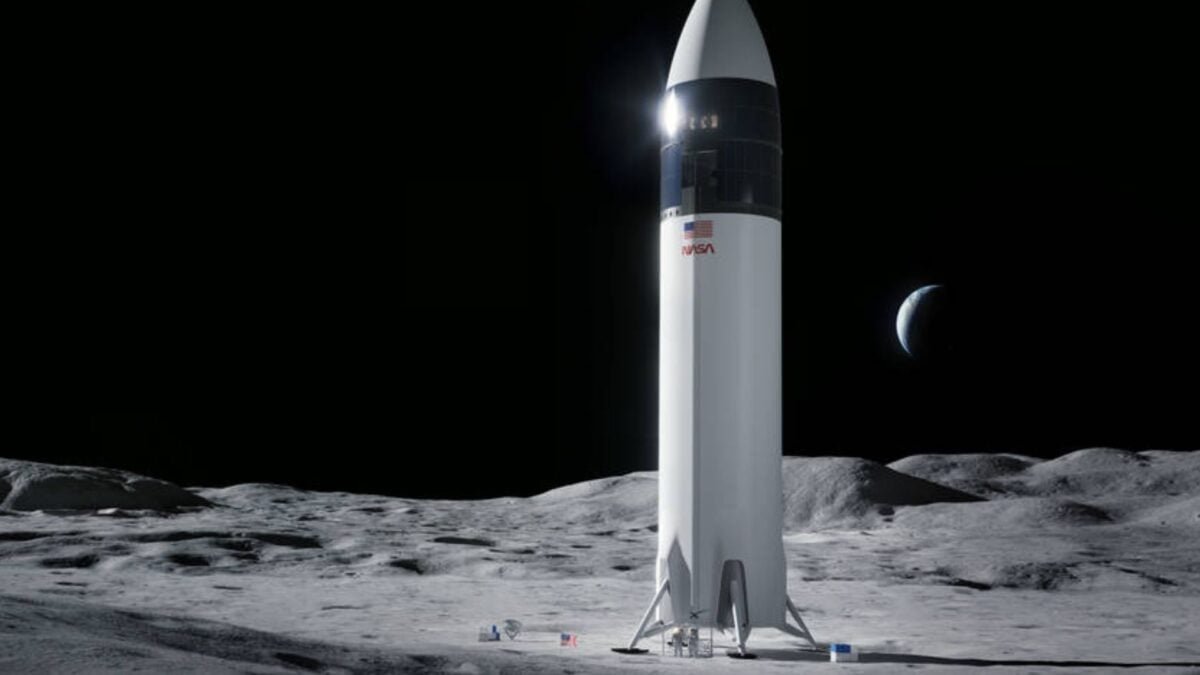
SpaceX has fallen behind in developing a crewed lunar lander for NASA’s Artemis 3 mission, leading the agency to reopen the contract to other providers. The additional pressure has prompted SpaceX to revise its strategy, but leaked proprietary information shows that the new approach still appears inadequate to meet NASA’s target date.
An internal SpaceX document obtained by POLITICO outlines a new timeline for the Starship Human Landing System (HLS) — which would bring Artemis 3 astronauts to the Moon by September 2028 at the earliest. That’s more than a year behind NASA’s mid-2027 target.
Achieving even this revised target will be a difficult task given Starship’s sheer size, complex design and the major milestones it has yet to achieve. An unnamed congressional aide told POLITICO that SpaceX’s 2028 objectives are still “too aggressive” given the current state of rocket development.
As SpaceX’s rivals move forward with their own offers for the Artemis 3 HLS contract, the company’s revised deadline does not bode well for its bid. Gizmodo contacted SpaceX and NASA but did not receive a response by the time of publication.
New HLS Timeline
NASA tapped SpaceX to provide the first crewed lander for the Artemis program in 2021. To meet that need, the company designed Starship HLS – a modified version of Starship’s upper stage designed to transport astronauts to and from the lunar surface. Its development is intrinsically linked to the core starship system, which has faced several interruptions this year.
The delay raised concerns from industry experts, Congress and NASA about SpaceX’s ability to land astronauts on the Moon by mid-2027. In October, acting NASA Administrator Sean Duffy reopened the Artemis 3 contract to other space flight companies in an effort to light a fire under SpaceX and investigate alternative options.
So, SpaceX went back to the drawing board. This leaked document gives a first look at the new HLS development program. According to Politico, SpaceX plans to incorporate the new dates into a “unified master schedule” it will deliver to NASA in December. The company will then work with NASA to update its existing contract and finalize the new schedule.
The document reportedly shows that SpaceX aims to perform propellant transfer to orbit in June 2026. This is an essential milestone for Artemis 3, as the Starship will need to refuel in space to reach the Moon.
The next step will be to perform an unmanned lunar landing with HLS, which SpaceX plans to do in June 2027. This is right around the time NASA expects to launch the Artemis 3 mission. If all goes well, SpaceX could land Artemis astronauts on the Moon by September 2028, but it’s entirely possible that won’t happen.
Starship has yet to complete a completely successful orbital flight – a prerequisite for orbital propellant transfer. Additionally, SpaceX will face a learning curve with the latest and largest iteration of the rocket, Starship Version 2. SpaceX plans to launch V2 – which will serve as the basis for HLS – in early 2026. Like the first half of V1’s 2025 launch schedule, V2 could have an explosive start.
The competition is heating up
How NASA will receive SpaceX’s updated timeline remains to be seen, but it’s not the only contingency it’s evaluating. Agency press secretary Bethany Stevens previously told Gizmodo that NASA has received plans from both SpaceX and Blue Origin to accelerate HLS production.
Stevens said that once the government reopens, NASA will issue a request for information (RFI) to the broader aerospace industry for their proposals. The agency will then form a committee of subject matter experts to evaluate each issue and select the best way forward.
It’s possible that Blue Origin could snatch the Artemis 3 contract from SpaceX. The company is developing its own crewed lunar lander, the Blue Moon Mark 2 (MK2). NASA has already contracted the Mk2 for Artemis 5, and although that mission will not launch for another several years, Blue Origin aims to demonstrate an unmanned version of the lander in January 2026.
The New Glenn — the megarocket Blue Origin will use to launch its moon landers — made a surprise second test flight last week, paving the way for a possible unmanned lunar landing within the next several months. With further delays to Starship HLS development, Blue faces a growing threat to its Artemis 3 contract.
